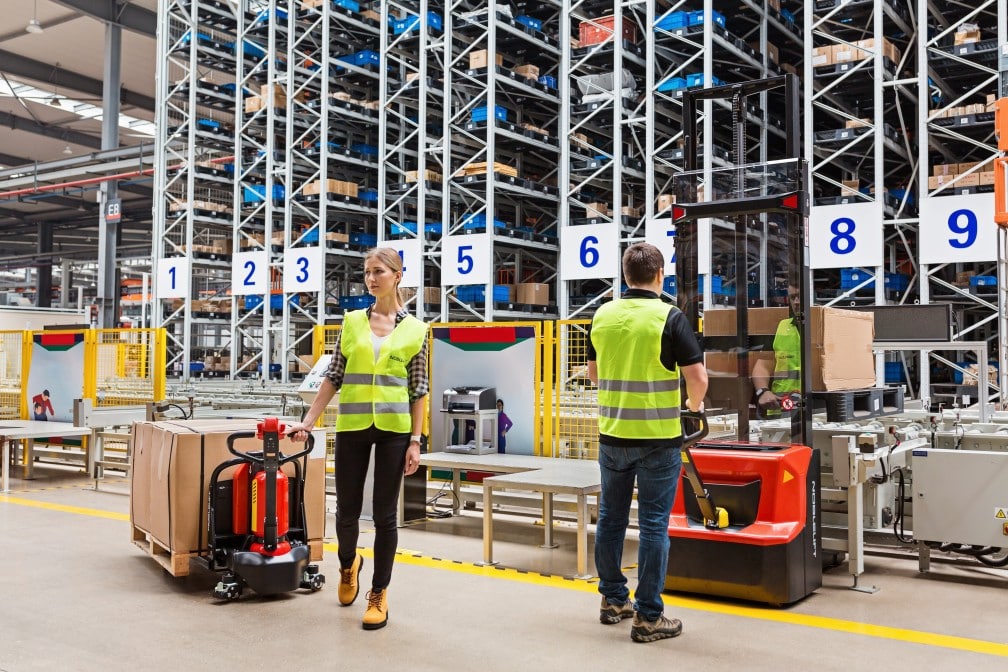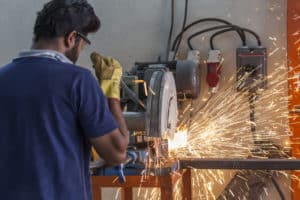In manufacturing, every hour counts. One study found that just an hour of unplanned machine downtime costs an average of $260,000 for a manufacturer. And with the COVID-19 pandemic already taking its toll on the manufacturing industry, businesses can’t afford more financial losses.
Reducing risk and increasing ROI are top concerns for manufacturers. The tips and trends discussed in this article give advice for better success both in increasing your productivity (and ultimately your profits) and in protecting your business in the first place.
Reducing Risks
There are many risks that you face when operating in the manufacturing industry. It’s important to not only be aware of those risks and their potential to damage the business, but also to know how to proactively prevent and reduce those risks. Here are some prevalent threats you can prepare for:
Disruption to Distribution Processes
Disruption to the overall distribution process can have an enormously damaging impact on businesses. If suppliers decide to make a sudden change in location or pricing, that could raise your costs or even leave you without necessary supplies. Maintain good supplier relationships in order to anticipate any changes well in advance.
Employment and Environmental Regulations
Breaking employment regulations, such as overtime regulations and wage laws, or environmental regulations, such as rules for proper disposal of waste, is another area where manufacturers can run into trouble. When these regulations are broken, at the very least, fines can be handed out, and in some cases, criminal charges can be levied.
Businesses that know the rules are less likely to break them, so that’s the first place to start with mitigating this risk. Stay up to date on all local, state, and federal laws that affect your business operations and make following them a priority.
Cyber Attacks
Cyber attacks have been called the fastest-growing crime in the US, and they’re posing an ever-greater threat to businesses. A data breach can cause damages in the form of downtime, fines, and loss of customer trust.
In order to make sure you’re ready for potential attacks and can avoid security breaches, you should ensure your business has a strong cybersecurity plan in place and get help from IT professionals to do so, if necessary.
Economic Conditions
The current economic climate and uncertainty caused by the COVID-19 pandemic is just one example of economic conditions that pose a risk to your manufacturing business. Although it’s always unfortunate when they occur, recessions and other adverse economic conditions will always pose a risk to businesses, and no company is exempt from their reach.
There’s no way to prevent economic downturns, but to anticipate this risk (and others), it’s a good idea to have a business continuity plan in place. A business continuity plan can help you take immediate action to preserve your business and keep it functioning in the case of disaster.
Get the Right Manufacturing Insurance in Place
Having the right insurance coverage in place will offer your business the protection it needs, when it needs it most. Good business insurance will cover the basics, like general liability insurance, workers’ compensation, and commercial property insurance.
Manufacturers can also add additional coverage according to your industry needs, such as product liability insurance, excess casualty insurance, inland marine insurance, and more. For your best chance of business success and preempting risks, be sure to carefully evaluate which types of insurance coverage your manufacturing business needs.
Increasing Productivity and ROI
Increased productivity is a natural precursor of greater ROI. Here are some ways businesses are accomplishing greater productivity in the manufacturing sector:
Keeping Processes and Technology Up to Date
Productivity levels will be higher when you’re relying on technology that’s up to date and able to keep up with the demands of the work you’re doing. With outdated technology, your business is immediately put at a disadvantage and output will suffer.
So, if it’s been some time since you’ve updated your processes and the technology used for them, this is an area you can immediately evaluate to see if investing in more advanced technology can increase your productivity.
Training Employees
Training your employees is a vital part of growing a business. Unless you want to go through the costly process of continually hiring more people, you should focus on improving the skills and abilities of the team that you already have in place. When they improve, the work they do improves, and productivity rises.
Keeping the Workplace Organized
A well-organized manufacturing floor can make a world of difference. If workers are constantly having to travel long distances between tasks, you’re losing efficiency. Make sure your work space is clear of clutter and processes are set up efficiently to maximize speed and productivity.
Carrying Out Predictive Maintenance
Predictive maintenance is about making sure the equipment you rely on is properly looked after and avoiding problems before they ever happen. It also goes beyond normal, reactive maintenance by using IoT devices to monitor peak performance and efficiency in real time. This way, you can be alerted when machines are having issues or breaking down with plenty of time for replacement or repairs that will keep your business running.
By using predictive maintenance, problems that would have otherwise arisen can be averted, saving the business resources and avoiding costly and unproductive periods of downtime.
These tips are just the tip of the iceberg when it comes to ways to reduce risk and increase ROI for manufacturers. But by employing them, you can get well on your way to becoming more profitable and productive in your manufacturing business.




